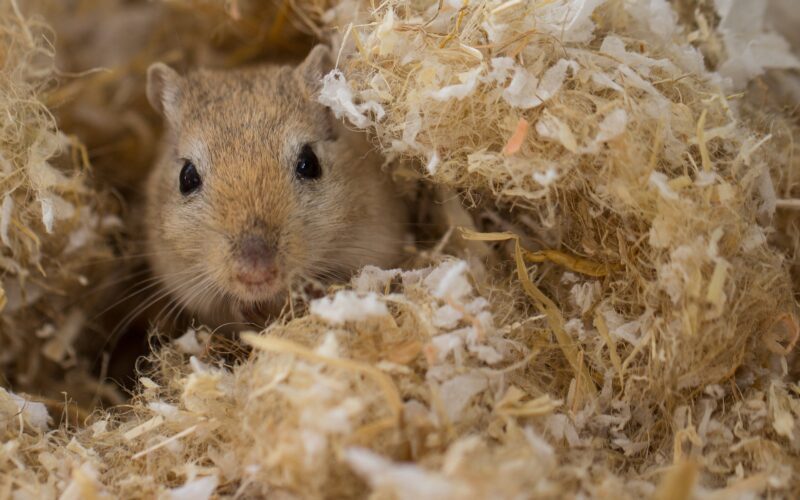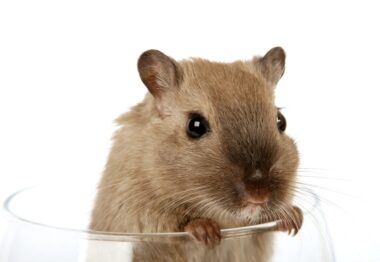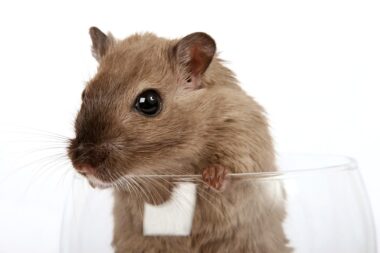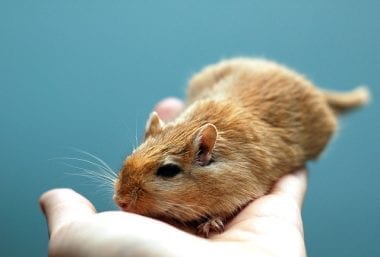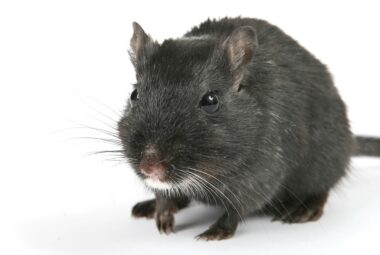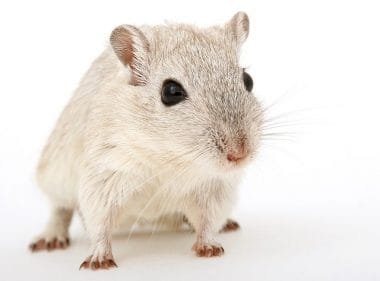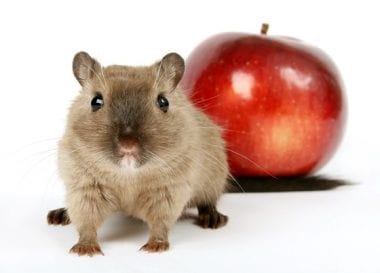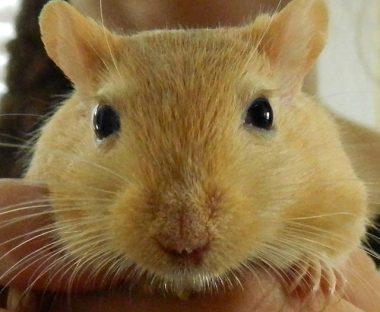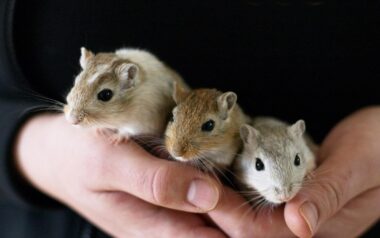Gerbils are small animals with an extremely sweet nature, making them the perfect pets. However, it is also true that they are not the easiest of all animals to look after. You need to take extreme care if you are planning to get a gerbil as your sweet little pet. It is of utmost importance that you provide a suitable environment for your gerbil. You also need to ensure that you provide your pet gerbil with consistent care throughout their lives.
As you may already be well aware, gerbils are social animals, and they love interacting with their kind. It is because of this reason that it is not advisable to keep them lonely with no company. You can, therefore, get a pair of gerbils or even family units. But to be able to take care of them properly, you need to understand gerbil behavior. Understanding different behavior patterns can help you become the best pet parent to your tiny munchkins.
Here are some gerbil behavior patterns that you must know of:
#1– Thumping
Everybody gets stressed, including your pet gerbil. While it is easy to find out if humans are stressed, you need to look out for behavioral patterns in the case of gerbils. Thumping is an activity gerbils partake in when they are particularly stressed or even excited. The gerbil behavior of thumping is produced by pounding both hind legs on the ground. Also, this pattern of thumping by one gerbil is reciprocated and replicated by other gerbils who are in the same room or enclosure. Let us suppose that one of your gerbils gets startled and starts thumping, all other gerbils will follow suit.
The thumping sound is not the same for all – it differs in loudness and tempo. This variance shows us the urgency or meaning. The sound can be pretty loud, especially considering that it is being produced by a very small creature. Also, since the thumping sound is pretty infectious amongst the gerbils, any similar noise in the house can mean that your little pets will also start mimicking it. You also need to note that young gerbils make a lot of thumping noises, but this is only a part of their learning routine. Most often, you do not need to worry about young ones making this sound. Another thing to note is that thumping is also a very common action that gerbils do when they are mating.
#2– Fighting
Fighting amongst gerbils is fairly common and may also be good-natured. This is also a way for your gerbils to play together. However, things can go from playful to aggressive pretty fast, so you need to be on the lookout. Do not shy away from intervening if things ever go rough. Although gerbils are social animals who love to live with each other, it does not always mean that they will always get on. If you see aggressive behavior, you need to separate them.
#3– Chewing
Gerbils are known to be chewers, just like most other rodents out there. Make sure you are providing your tiny pets with enough chewing toys. These can include wood blocks and branches. If there is a lack of enough chewing materials, they will chew the cage furnishings, since this is their natural behavior.
#4– Squeaking
Gerbils are known to make a lot of noises, which may sound like high-pitched squeaks. However, this is only common in youngsters. Adult gerbils only make such noises when they are stressed, excited, or simply playing.
#5– Burrowing
Gerbils’ system of living changes when they are brought in as pets and made to live systematically. In the wild, gerbils have a very complex system of living that includes tunnels and burrows. Since burrowing is their natural behavior, it would be nice if you could provide a similar setting for them at home. This means that you need to give them enough room where they can burrow within their enclosure. You do not need to go to the wild for this. Get some hay and wood shavings and create a deep layer – this will provide them enough room to follow their instinct of burrowing.
#6– Scent Marking their Territory
Gerbils are creatures that have a scent gland on their abdomen. This is something that they use to mark their territory. If you see your gerbil rubbing its stomach on the cage or other furnishings, know that it is only marking its territory.
#7– Need for Space
Gerbils live in groups in their natural habitat. Since in their natural space, they have plenty of living room for all, you need to make sure that you are giving them the same. Make sure you have a large enough area where they can live, play, exercise, and relax.
#8– Grooming
Gerbils love to groom themselves – they are one of the cleanest and well-maintained pets that you can have. Compared to other animals, gerbils are also less smelly. Apart from grooming themselves, they also love grooming each other. This, as per gerbil behavior, is a very important part of social interaction. They love taking a dust bath. All you need to do is offer them some sand and they will just roll and play in it. This helps to keep their fur clean, while also giving them enough play time.
#9– Winking
While this may seem a little far-fetched, you will notice that your gerbil can wink. Yes, this really is typical gerbil behavior. According to research and findings, gerbils who are content or submissive most often resort to winking. So, if you see your gerbil winking at you, what should you do? Simply wink back to let the little man know that all is good.
#10– Nose Greetings
While we humans resort to shaking hands to greet each other, gerbils rub their noses. Gerbils will greet each other and show their friendly nature by rubbing their noses. There are also occurrences of gerbils rubbing their noses with their owners.
#11– Running
Gerbils may be sweet little creatures, but they are ready to react when they perceive a situation to be a threat to them. Their common gerbil behavior tells them to run on such instances. If you want to know if your gerbil is taking such a stance, note their tail and back. During such times, gerbils will keep their tail in the air and they will have an arched back. This stance is also preceded by some amount of thumping.
#12– Purring
Cats are known o purr a lot when they are happy and content. But they are not the only creatures to do so. Gerbils also purr when they are happy. If you notice your gerbil purring when you hold him or her, it is a good sign. This means that your gerbil is happy and relaxed with you.
#13– Standing on their Back Feet
If you ever see your gerbil standing on its back feet with the front paws in the air, this means that he or she is very curious about something. This behavior is quite common amongst gerbils when they want to get a better view or sniff something that has caught their interest.

#14– Social Life With Other Gerbils
Gerbils are social animals, which means that they love staying with each other. It is because of this reason that it is advisable to keep at least a pair of gerbils as pets, if not the entire family unit. Gerbils are also quite affectionate with one another. They love playing and chasing each other – this playtime also includes wrestling and boxing.
Apart from these activities, gerbils also partake in grooming, cuddling, and sleeping together. However, there may be instances of fights between your gerbils. This may be a little difficult to distinguish from their playful wrestling and boxing. You can find out if they are aggressive with each other if you hear high-pitched squeaks of distress from one of the gerbils. Also, the activity between them will be more intense and violent. Kindly note that if your gerbils have indulged in violent acts with each other, they will never be able to live harmoniously together. If this is happening, it may be better to separate them.
#15– Licking Glass
Licking glass is another common gerbil behavior. This is most often seen in the youngsters who are not well adept at drinking from water bottles. However, you may also notice adults licking glass – this behavior means that they are thirsty. The natural behavior of a gerbil is to lick up moisture, so a pet gerbil is also trying to do the same by licking up the glass. When you see your gerbil licking glass, make sure to check his or her water bottle to make sure there is still water left for them.
Final thoughts!
These were some of the most common gerbil behavior patterns that you will come across. So, if you see these behaviors in your gerbils, you now know what they mean. With these patterns, you can see what your gerbil needs from you and how you can be a better pet parent to your little munchkin.
